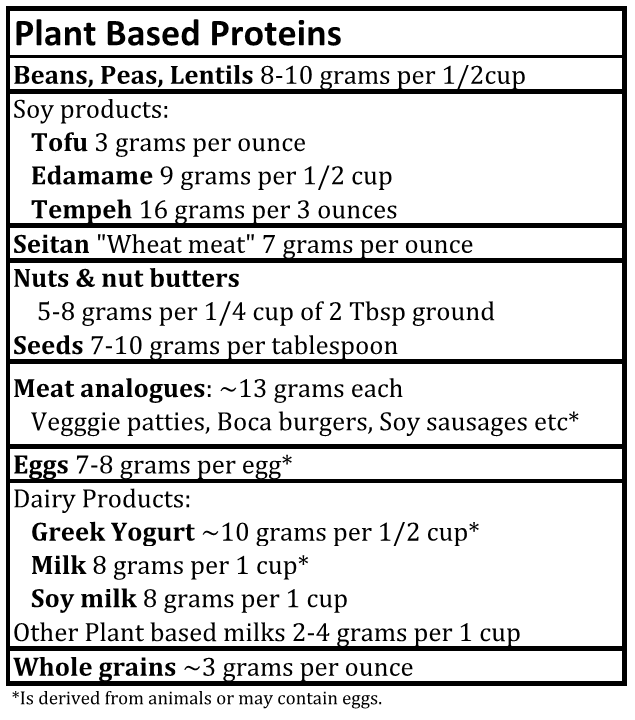The Practical Plant-Based Eater
- Kate Berger, RD

- Apr 23, 2019
- 7 min read
Updated: Dec 9, 2020

Plant based nutrition has to do with eating more foods derived from plants. It's a philosophy that stands on its own and doesn't mean your lifestyle should change to vegan or vegetarian. Basically, plant-based nutrition is about making plant foods more of a focus and not just a side dish or after-thought.
Americans eat just the opposite of recommended dietary guidelines. The typical eating patterns of many Americans, specifically 3/4 of people, aren't able to meet the Dietary Guidelines for daily servings of fruit. and vegetables- the guideline is at least 3 servings of vegetables and 2 servings of fruit daily.
The Academy of Nutrition and Dietetics has a position paper stating that vegetarian diet pattern (as an example of well planned plant-based eating pattern) are safe for people of all life stages- men, women, pregnancy, lactation, infancy, childhood, adolescence, older adults and also athletes.
At one time, I had my own concerns that eating more plant-based foods and reducing how much meat I ate. I assumed I would be eating too many carbohydrates and not enough protein, B vitamins, iron, or other minerals. So I am writing this to offer information on filling these gaps. Here's the breakdown on planning a balanced dietary pattern that's focused on plant sources for your health, not to mention the health of the environment too.
Protein.
Most people have followed some of the trendier dietary plans like Paleo or Atkins which really emphasize eating protein. Yet, most people eat twice the amount of protein required for health maintenance without following any of these restrictive diets. Whether or not you still consume meat, plant-based proteins are an excellent addition or even substitution.

Below you can see many plant-based proteins options and ways to prepare them to make sure you get the amount that's right for you.

Pairing protein to each meal and snack and using different proteins at each meal can assure a better variety of other nutrients. For instance, a meatless or vegetarian meal can look like having a 2 egg spinach omelet (13g), with 1 serving soy milk (8g), fresh blueberries, 1 serving (6oz) of greek yogurt (~15g), and 1 Tbsp flax meal or hemp seeds (7-10g) would give you approximately 42 grams of protein (more than half your RDA needs in just 1 meal).
A vegan meal (without animal sources like dairy or eggs), for example, can include 3 ounces of grilled seitan "burger"(21g), open-faced whole grain bun (2g) with grilled mushrooms, fresh spinach, sprouts, tomato (~3-5g total), with a side of 1 serving lentils and caramelized onions (9g), and 1 cup soy milk (8g) would be approximately 45 grams of protein (again, more than half the daily RDA for protein).
With well-planned meals that consider plant-proteins, anyone interested in a plant-based lifestyle can get more than enough protein from these foods and eat more nutrient rich foods!
For more information on protein for the plant-based eater click here.
Iron.
The body prefers iron from sources like meat- it's just absorbed better. We might then assume people who are not meat eaters won't get enough iron but studies show that this is not the case. Vegetarians absorb enough iron likely because the body looks for the iron because it's not as readily available.
Plant foods with iron include beans, peas, dried fruits like apricot and raisins, dark leafy greens such as spinach, iron fortified products like breads, crackers and cereals (Grape Nuts meet 90% daily value for iron..wow!)
Some easy things to practice when making food can be using cast iron skillets and pairing vitamin C with high iron foods to increase iron's absorption. Iron also completes with calcium so taking calcium supplements and drinking teas and coffee between meals will help ensure the iron you're eating isn't getting any interference from these other nutrients.
A great strategy I encourage is using cast iron pots and skillets to transfer iron safely to enrich foods when they are being cooked.
Another strategy is cooking vitamin C rich sources to help your body absorb more iron. Some of these high vitamin c foods include broccoli, brussels sprouts, peppers, dark leafy green veggies. sweet potatoes and winter squash. You can even add last minute tomato, lime or lemon to your food once you're done cooking with your cast iron skillet (so that you don't ruin the skillet with citrus).
For more resources on iron, you can check out this link from the Vegetarian Nutrition Practice Group.

Calcium.
This nutrient is a concern for most of the population because calcium is in dairy products, but experts estimate that about 68 % of the world’s population has lactose malabsorption. 2 Even those who consume dairy products are not always getting enough to meet 1,000mg-1,300mg for most people (age 9+). 1
But calcium isn't only found in dairy. Calcium can be found in dark leafy green vegetables such as cooked collard greens, swiss chard, and turnip greens, as well as fortified products like plant-based milks, tofu, fortified orange juice and cereals.
Looking at the %Daily Value on the nutrition labels- 20% is a good source but know that many plant milks have more than 45% and others have 0%. This is key when choosing foods like plant based milks to know that the product has calcium in it. Also, very important-don't forget to shake the milk carton! I really didn't know that until recently and didn't care to do it because I've dropped a few milk cartons in the process. Apparently that's important so shake it up before you pour!
Calcium is dependent on vitamin D and that's why they are usually paired together. If vitamin D is low, calcium can't be absorbed. So, how's your vitamin D?
Supplements to consider.
According to a 2011 study, 41.6% of adults in the US are deficient in Vitamin D. Infants and children worldwide have been identified as most vulnerable to deficiency. Vitamin D is consistently low in most diets. Vitamin D depends on your individual vitamin D lab values, if you have inflammatory or malabsorptive diseases and where you live (latitude is important for UVB rays to reach your skin to be made into vitamin D). It's also absorbed into your skin differently depending on how dark your skin is and how much you cover up with clothes or sunscreen. With all these factors combine, it's no wonder most people are just not getting sufficient amounts. 3
You can learn what your vitamin D labs are by asking your doctor to run a lab work-up. For infants and kids, urine testing is an option if you want to know that they are getting what they need. Know that these levels change relatively quickly, and the time of year is important to take into consideration as we get most sunlight in the summer and fall months. Summer and fall months are meant to support our vitamin D needs throughout the winter and spring. So finding out what these levels are in the winter and spring can help you determine if you need a supplement and just how much you should take, with our doctor's suggestion and follow-up labs.
B12 is another nutrient to consider supplementing if you don't consume any animal related products. The RDA for B12 is 2.4mcg/day. For those consuming fortified nutritional yeast, milk, eggs, yogurt and cheeses, vitamin B12 supplementation may not be necessary. However, for all adults over the age of 50, if you are taking metformin or proton-pump inhibitors, it is recommended to supplement with vitamin B12.
Vegetarian diets are classically high in omega-6 fats. These fats come from processed foods, corn oil and soybean oils. But the emphasis, as you may have heard, is on omega-3 fats which aid in inflammation and cellular healing. And needs for these nutrients aren't exclusive to vegetarians or vegans, unless you consume regular salmon, mackerel, cod liver oil or herring. Plant-based Omega-3s are from sources like flaxseeds, walnuts, canola, hempseed and olives, as well as their oil forms. More direct forms of omega-3s are seaweed, algal based supplements and fortified foods with DHA and EPA.

Practical Plant-Based Eating
Think about the plant-based meals you are already eating and try eating more of them!
The plant-based foods you already eat may need some tweaking to be more flavorful, different or creative to revisit. Try looking up recipes online for foods you are familiar with but with a plant-based style, vegetarian or vegan twist.
I encourage you to try a recipe with an appetizing picture so you can have a better idea what looks appealing to you. The recipes I have on my website are also available to check out for free. They are meant to be simple, quick and with fewer ingredients to make plant based realistic for busy people and for those easing into making plant-based foods at home.
When eating out- use it as an opportunity to try a vegetarian dish that is prepared properly so you can try it first. You may consider going to a restaurant that serves traditionally vegetarian or vegan foods. What you choose could end up being something you can re-create at home.
Check out the meat analogues in the grocery store to help make the transition from a typical meat-based product to a protein rich alternative. Meat analogues aren't something to be consumed regularly because they are also technically processed, but for some it can be a great way to try plant-based options. They are really helpful when you are in the social setting, like a BBQ, where it's an easy swap.
Switching from meat-veggie to veggie-meat focused meals. What if you swapped proportions of protein or meat-based foods with your vegetables?! Explore cooking vegetables as your main dish, making them taste delicious and still having meat present on your plate.
For more info and recipes check out Vegetarian Nutrition and their fantastic website for the public.
It doesn't have to be all or nothing! Whenever you change something as important as how you eat, it takes time and planning. Keep it experimental, fun and deliberate! And when you come across something that works, share it with people. Tell people about your triumphs with recipes and experiments. Veggies could really use a win!
1 US Dietary Guidelines for Americans 2015-2020, Eight Edition. Dec 2015.
2 Storhaug CL, Fosse SK, Fadnes LT. Country, regional, and global estimates for lactose malabsorption in adults: a systematic review and meta-analysis. The Lancet. Gastroenterology & Hepatology. 2017;2(10):738–746.
3 Forrest KY, Stuhldreher WL. J Nutr Res Elsevier. 2011. Jan;31(1):48-54. doi: 10.1016/j.nutres.2010.12.001.


Comments